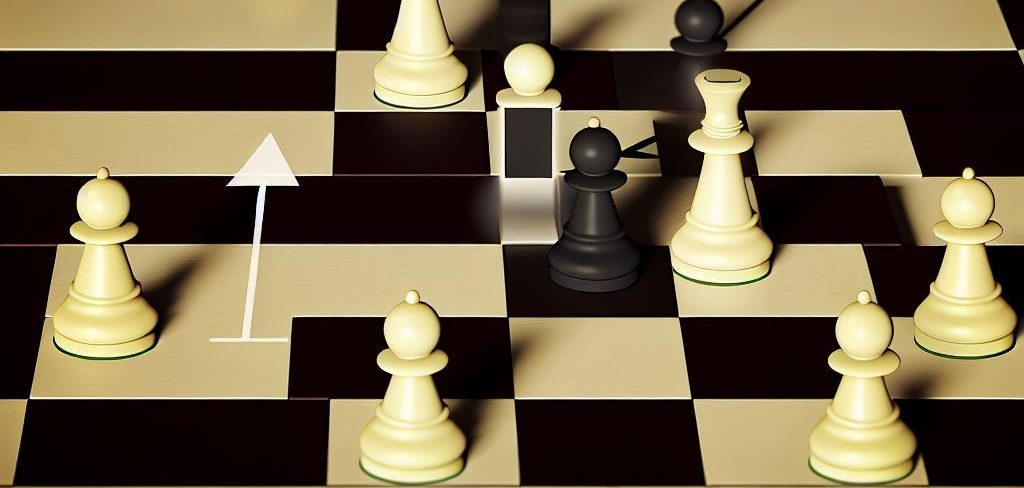Understanding Pawn Advantage in the Endgame
In the game of chess, the endgame is a critical phase where the influence of pawns becomes significantly heightened. Successfully converting a pawn advantage into a winning position requires strategic thinking, careful planning, and precise calculations. In this article, we explore key concepts and techniques that can help leverage this advantage effectively.
Centralizing the King
One of the foundational principles of endgame strategy is the active use of the king. In the opening and middlegame, the king is often seen as a target requiring protection. However, in the endgame, it becomes a powerful piece capable of controlling large areas of the board. By centralizing your king, you effectively enhance your position, gaining the ability to control critical squares and provide support to your advancing pawns. Centralizing the king can thus aid in controlling critical squares, influencing both offensive and defensive strategies.
When the king is actively participating in the endgame, it can dominate weaker squares and limit the opponent’s options. Moving the king closer to the central squares not only increases its activity but also helps in supporting pawn advancement and limiting your opponent’s potential counterplay.
Pawn Promotion
A central objective in achieving victory with a pawn advantage is to promote one of your pawns to a more powerful piece, often a queen. The process of attaining this goal requires careful strategy to create pathways for your pawns while minimizing obstructions. To efficiently guide your pawns to their promotion squares, clear any obstacles, use your king’s assistance to shield the advancing pawns, and strategically target weaknesses in the opponent’s pawn structure.
Promotion is not merely about reaching the end of the board; it involves thoughtful planning, such as identifying the best pawn to promote, assessing the opponent’s defenses, and ensuring the safe passage of the advancing pawn. This careful orchestration can provide a significant material advantage, tipping the scales towards victory.
Creating Passed Pawns
Passed pawns are especially potent in the endgame, as they have no opposing pawns blocking their path to promotion. If you possess a numerical pawn advantage, one effective way to capitalize on it is by creating passed pawns. The mere threat of a pawn promoting can force your opponent’s pieces into passive positions, allowing you to dictate the pace and direction of the game.
To create passed pawns, leverage tactics and strategic exchanges that isolate your pawn from its blockers, making room for unhindered advancement. Utilizing strategies such as pawn breakthroughs, exchanges, or sacrificial plays can often create scenarios where passed pawns thrive, pressuring your opponent’s defenses and opening opportunities for tactical exploitation.
Leveraging Opposition
The concept of opposition plays a pivotal role in endgame scenarios involving kings. Opposition occurs when kings directly face each other with an odd number of squares between them, bestowing control over subsequent moves. Properly using opposition allows players to maintain board control and convert their advantage into material or positional gains.
When your king engages in gaining opposition, you create scenarios forcing your opponent into making unfavorable moves. Such strategic king play can offer your pawns the liberty and momentum to advance, often leading to decisive breakthroughs or culminating in promotion. Learning to navigate opposition effectively is invaluable, ensuring you maintain pressure and capitalize on even the slightest advantage.
Restricting Opponent Pieces
An integral part of converting a pawn advantage into victory is ensuring that the opponent’s pieces remain restricted. Utilize your pawns and king to assert control over key squares and inhibit the mobility of enemy forces. Block enemy pawns’ advancement and aim to limit the opposing king’s activity, reducing the possibility of effective counterplay.
Effective restriction can prevent your opponent from coordinating their remaining pieces, undermining their defensive resources. With reduced options, your opponent faces increasing difficulties, paving the way for your pawns’ advancement and eventual promotion.
Planning Tactical Play
While strategic maneuvering forms the core of endgame play, an awareness of tactical opportunities remains equally important. Tactical motifs like forks, deflections, pins, and skewers are common tools to disrupt your opponent’s coordination and create openings for your pawns. Be vigilant for these tactical chances that can facilitate breakthroughs and accelerate pawn advancement.
Maintaining tactical awareness not only helps in conducting offensive strategies but also safeguards against unexpected defensive maneuvers. By routinely assessing the board for tactical possibilities, you can maintain pressure on your opponent, exploiting weaknesses and consolidating your positional advantage.
Considerations for Draw Scenarios
Despite having a pawn advantage, certain endgames are inherently drawn. Recognizing these scenarios becomes essential to avoid unnecessary risks or forced stalemates. Understanding key endgame positions, often referred to as theoretical draws, can help players conserve their resources and avoid suboptimal decisions that could otherwise result from ill-calculated aggression.
When faced with potential draw scenarios, it’s important to either adjust your strategy to avoid forcing a stalemate or transition into a theoretically winning position. Through a profound understanding of these positions, players can make well-informed decisions, preserving the integrity of their advantage.
Converting a pawn advantage into victory in the endgame involves a synergy of strategic understanding and skillful execution of both strategies and tactics. By actively utilizing your king, advancing your pawns, and continuously pressuring your opponent, you substantially increase your chances of success. The techniques outlined in this article emphasize the significance of endgame knowledge and intuitive play in fully capitalizing on a pawn advantage. Whether it is by employing tactical motifs or understanding theoretical draws, mastering these techniques enriches a player’s strategic arsenal, forging a path toward chess mastery.



